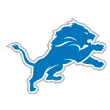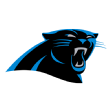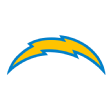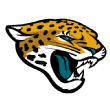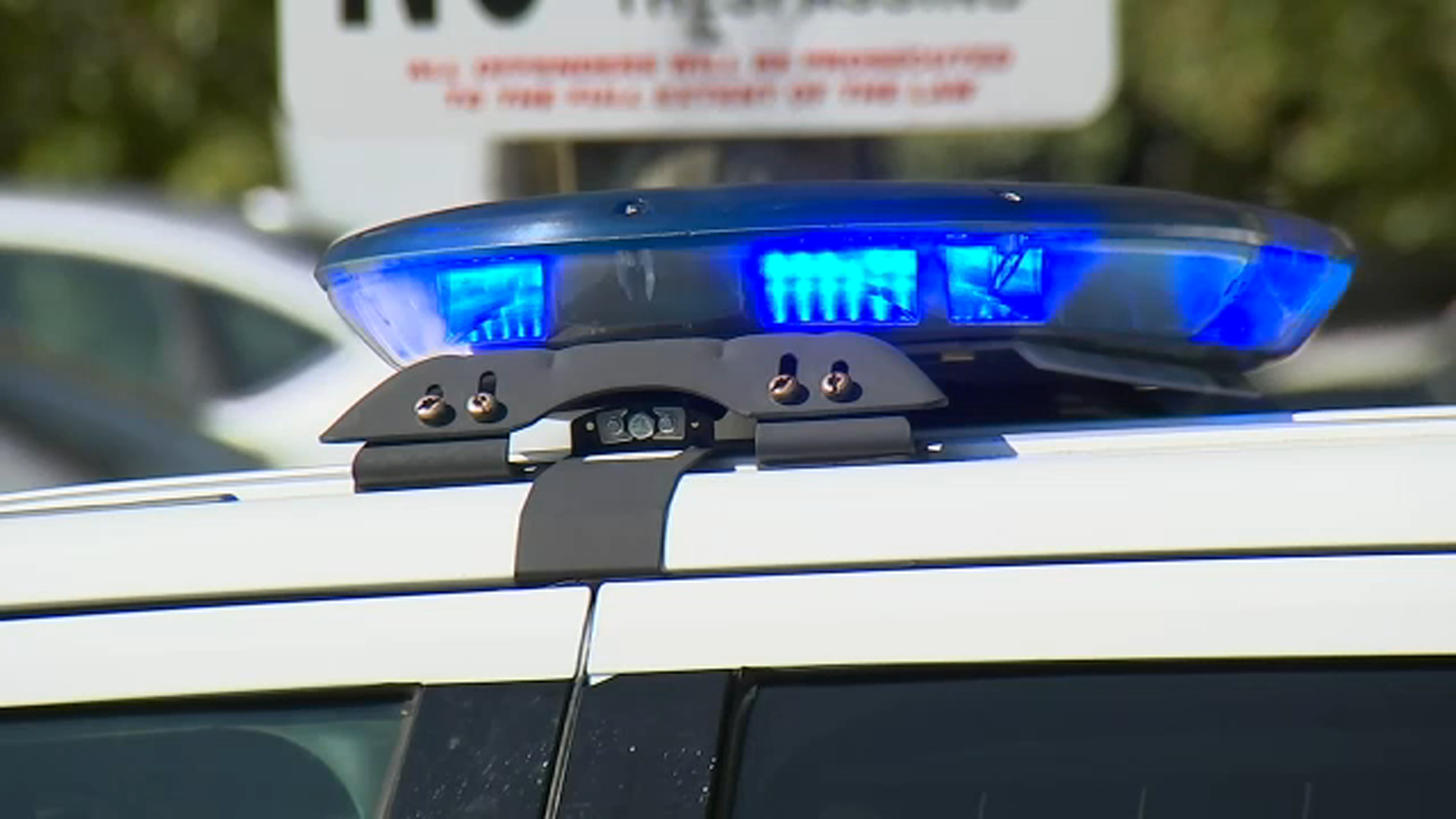Five teams that could be the 49ers of 2020, and all the similarities

If you're a fan of a team that struggled in 2019, chances are the 49ers are giving you hope for 2020. I mentioned last week that the 49ers ranked among the most unlikely Super Bowl teams in league history, and while there were plenty of reasons to think they would improve, no one at this time last year projected them to make it to Super Bowl LIV.
Let's take a run through the rest of the league and try to identify five teams that might be similar to the 2019 49ers. Projecting any of them to make it as far as San Francisco has this season would be naive, and some of the comparisons are admittedly generous, but there are at least plausible links between how the 49ers improved from 4-12 in 2018 to 13-3 in 2019 and how these teams might improve between now and 2020.
Let's start with a team that finished toward the bottom of the NFC and a coach who matched up against 49ers coach Kyle Shanahan in the Super Bowl a few years ago:
Jump to the other four teams:
Chargers | Jaguars
Panthers | Steelers
Detroit Lions (3-12-1)
Similarity: They spent most of 2019 without their starting quarterback. Matthew Stafford was playing arguably the best football of his career before missing the final eight games with a fractured back. The Lions then spent the rest of the season with a pair of replacement-level backups in David Blough and Jeff Driskel, who went 0-8 while averaging just 1.4 points per drive, the second-worst rate in football.
Stafford had trouble staying healthy early in his career, but he had made 136 consecutive starts before suffering the back injury, so he should be projected for a full return to health in 2020. It's not quite as easy to project a 16-game season from running back Kerryon Johnson, who has now missed 14 games over his first two seasons, but the Lions will hope to get more than eight games out of their promising lead rusher in 2020.
Similarity: They didn't rack up many interceptions. While the Lions recorded more than the NFL record-low two interceptions that the 49ers generated in 2018, Darius Slay& Co. finished the season with just seven picks across 611 pass attempts, which resulted in a league-low interception rate of 1.1%. The Lions forced just six turnovers during their eight-game losing streak to end the season despite playing teams like the Bears, Broncos and Buccaneers.
Interception rate on a team basis tends to be inconsistent from year to year. Over the past decade, 20 teams have posted an interception rate under 1.5%. The following year, their average interception rate was 2.6%. On the other end of the spectrum, the 20 teams that posted an interception rate over 4% during that time frame fell to 3% the following year. The Lions should intercept more passes by sheer chance alone in 2020.
Similarity: They have an X's-and-O's genius on staff. Shanahan is regarded as one of the NFL's brightest offensive minds, and though the Niners didn't show that frequently while Jimmy Garoppolo was out injured, they have been brilliant on offense in 2019.
Matt Patricia's first two years as Lions coach have fairly been panned. Detroit hired him after a season in which he oversaw the league's second-worst defense by DVOA. Patricia inherited a Lions defense that finished 19th in the same statistic and led them to finishes of 27th and 28th in his first two seasons. The unit was supposed to see marked improvement this season after the Lions added Patricia-approved pieces like Trey Flowers, Justin Colemanand Jahlani Tavai, but they instead remained as one of the league's worst defenses while posting the second-worst adjusted sack rate in football.
But if you ask around the league, Patricia is regarded as a bright defensive mind. He was the one who initially tried to stop the Rams in 2018 with a 6-1 front, a move the Bears and Patriots emulated with better personnel to shut down the Sean McVay offense before the rest of the league followed suit in 2019. This season, Patricia altered his game plan against the Chiefs to play more man coverage and try to win with four-man rushes, and while the Chiefs still scored 27 points, the Colts used a similar philosophy to upset Kansas City the following week.
With better personnel, Shanahan was able to show off just how creative of a playcaller and tactician he can be on the offensive side of the ball. Patricia is probably not on Shanahan's level, but he's clearly somebody who can come up with creative game plans. If Detroit can upgrade its defensive talent this offseason, Patricia might be the one directly benefiting from his ideas.
Difference: They (probably) won't be able to use their high draft pick to add the draft's best pass-rusher. Things fell perfectly for the 49ers in the 2019 draft, as they were able to use the second overall pick on Ohio State pass-rusher Nick Bosa after the Cardinals took Kyler Murray first. Bosa was an immediate difference-maker along a defensive line that morphed into one of the league's best in 2019.
The Lions would likely love to grab another stud pass-rusher out of Ohio State, Chase Young, at No. 3, but he's likely to come off the board at No. 2 to Washington. The Lions could get lucky if a team trades up with Washington to draft one of the quarterbacks, but they probably shouldn't print any Young jerseys in Honolulu blue just yet.
Similarity: They could use a high draft pick to address a key defensive point of weakness. Even without adding Young, the Lions should be able to nab somebody who will make a significant difference on the defensive side of the ball. Early mock drafts have the Lions opting for Ohio State corner Jeff Okudah, which would give Detroit the outside corner it has long lacked across from Slay. With Slay, Okudah and Coleman, the Lions would have a cornerback trio with top-10 upside.
Similarity: They blew a lot of games late. The 2018 49ers lost four games in which they had a lead at some point during the fourth quarter, ranking among the worst in the NFL. The 2019 Lions are in a similar space, as they were the only team in the league to post a losing record in games in which they led heading into the fourth quarter. Detroit was 2-4-1 when it held a lead with 15 minutes to go; the rest of the league was 198-33.
Even that stat sells the Lions short. They lost or tied three games they were winning with one minute to go and lost a fourth that was tied in the final minute. Three of those four games were against teams that made it to conference title games. Both the 2018 Colts and 2019 49ers have gone from blowing the most fourth-quarter leads in football to righting the ship and making it to the postseason the following year.
Difference: Their coach doesn't have a track record of success in multiple places. While Shanahan succeeded as an offensive coordinator with the Texans, Washington and Falcons before getting his head-coaching opportunity in San Francisco, Patricia spent his entire NFL coaching career before Detroit with the Patriots. It's unclear whether he can succeed without working alongside arguably the best coach in NFL history, and the early returns haven't been impressive.
Carolina Panthers (5-11)
Similarity: They spent most of 2019 without their starting quarterback. While the 49ers got three starts out of Garoppolo in 2018,the Panthers only got two from Cam Newton in 2019, and even those were compromised by injury. After undergoing offseason shoulder surgery, he battled a foot injury originally suffered during the preseason. Newton remained sidelined for the remainder of the campaign, and the Panthers turned things over to the combination of Kyle Allen and Will Grier, who were replacement-level passers.
Of course, we don't know who will actually be lining up for the Panthers under center in Week 1 next season. Newton is entering the final year of his contract extension. New coach Matt Rhule witnessed Grier set his Baylor defense alight in 2018, when the West Virginia quarterback threw for 353 yards and three touchdowns on just 27 attempts in a 58-14 blowout. The Panthers could sign someone from outside the organization like Philip Rivers or Teddy Bridgewater. Anything is on the table.
Regardless of whom the Panthers choose to start at quarterback, though, chances are they'll get more than two starts (or zero healthy starts) from their lead signal-caller in 2020. Given the weapons Carolina has on offense, improved quarterback play could turn this into one of the most impressive attacks in the league.
Similarity: They can't get much worse at a key element of defense. Carolina was a mess on defense this season. After its Week 7 bye, it allowed 33.7 points per game, nearly five points worse than any other team. In part, that was because the offense handed the unit truly awful field position: Opposing offenses needed an average of only 68.3 yards to score touchdowns on their drives over those final 10 weeks of the year; only the Buccaneers faced opposing offenses with a shorter field on average.
Where the Panthers really struggled most, though, was against the run. They finished dead last in run defense DVOA. They allowed opposing rushers to gain 5.2 yards per carry, the fifth-worst mark for any rush defense over the past 20 years. Ron Rivera's defense played the final 14 games of the season without star defensive tackle Kawann Short and lost fellow tackle Dontari Poe to a torn quadriceps afterward, so Carolina hopes to improve with healthier defensive personnel up front for new defensive coordinator Phil Snow.
Difference: Their future Hall of Famer won't be coming back on defense for 2020. While the 49ers were able to rely on Richard Sherman as the veteran presence solidifying an otherwise-young defensive backfield, the Panthers lost one of the best players in franchise history when Luke Kuechly announced his retirement earlier this month. I suspect they'll go after someone to play alongside Shaq Thompson this offseason, but it's hard to imagine they'll find somebody as good against the run as Kuechly.
Similarity: Their turnover margin should improve. The 49ers produced a disastrous turnover margin of minus-25 in 2018, owing both to their historically low interception rate and an offense that turned the ball over twice per game. Shanahan's team improved to plus-4 in 2019, and while that was still only tied for 10th in the league, that's a year-to-year improvement of 29 takeaways.
The Panthers in 2019 weren't quite as bad as the 49ers, but they still posted a turnover margin of minus-14, which was tied for the third-worst mark in football. Over the past 20 years, teams with a turnover margin in that range -- between minus-16 and minus-12 -- have improved their turnover margin by an average of just under 11 takeaways the following season. They've also won an average of 1.6 more games than they did the prior season.
Similarity: The Panthers were bizarrely bad in one element of the game. For the 49ers, this was forcing interceptions. The Panthers didn't set any records for futility, but when it came to punt returns, they weren't far off. NFL teams allowed seven punt return touchdowns in 2019. Carolina allowed three of those. When one team allows more than 40% of the league's touchdowns, it probably needs to fix something.
Just one team has allowed more than three punt return touchdowns over the past 20 years, and the Panthers hadn't allowed a punt return touchdown since 2016, so I'm inclined to chalk this up to randomness. I have to figure they will be better at stopping opposing punt returners in 2020.
Difference: The Panthers' division should still be a problem. The 49ers were well-positioned to pounce in 2019, given that the division-champion Rams were one of the most likely teams in the league to decline. The Cardinals had been the worst team in football the prior year, and while the Seahawks ended up posting an 11-5 record, the Niners were able to take the Rams' place atop the division.
Things aren't quite as clear in the NFC South. The Saints' underlying statistics suggest that they're likely to take a bit of a step backward in 2020, but they said the same thing heading into 2019, and they were able to maintain their 13-3 record. The Bucs took a step forward, which was supported by their underlying numbers in 2019, while the Falcons looked far more dangerous after making changes to their defensive playcalling at midseason. The South could be one of the league's most difficult divisions in 2020, which would make it tougher for the Panthers to climb the ranks.
Pittsburgh Steelers (8-8)
Similarity: Their starting quarterback lasted two games, too. Sense a trend here? Ben Roethlisberger struggled against the Patriots in the season opener, then went to the locker room just before halftime in Week 2 against the Seahawks and never made it back onto the field. He underwent season-ending elbow surgery, and while it's generally not a good thing for a 37-year-old quarterback to undergo elbow surgery, Roethlisberger had several extra months to heal by virtue of suffering his injury in September as opposed to December or January.
The Steelers are priced into a Roethlisberger return because of his contract structure, so I would expect him to be the starting quarterback in Week 1 of 2020. His presence would be a massive upgrade for the Steelers, who were useless on offense with the combination of Mason Rudolph and Devlin Hodges at quarterback. Over the second half of the season, the Steelers averaged just 12.4 points per game on offense, which was last in the NFL by more than three points per contest.
Difference: Their defense is already great. The 49ers finished 23rd in the NFL in defensive DVOA in 2018. They projected to improve in 2019 for a number of reasons -- they massively improved their pass rush by adding Bosa and Dee Fordand couldn't possibly intercept just two passes in a full year again if they tried -- but it wasn't clear that they were about to become arguably the league's best defense overnight.
The Steelers don't need to make that sort of leap, because they're already one of the league's best defenses. Pittsburgh finished just behind the Patriots and 49ers in third place by defensive DVOA, and they tied the Ravens by allowing a league-low 1.2 points per possession over the second half of the season. With the defense built around young stars like 25-year-old T.J. Watt and 23-year-old Minkah Fitzpatrick, Pittsburgh is well-positioned to remain among the best in 2020.
If anything, we would expect this team to decline slightly on defense after forcing a league-high 38 takeaways in 2019. No team has forced 35 or more takeaways in consecutive seasons since 2006, when 14.2% of offensive drives ended in turnovers. That figure is now at 11.8%. Given the talent Pittsburgh has, my guess is it ends up somewhere around fifth or sixth in defensive DVOA in 2020. If that combines with an improved offense after Roethlisberger returns, the Steelers should return to the playoffs.
Similarity: They should get healthier. The 49ers ranked among the NFL's most injured teams in 2018, finishing 26th in offensive adjusted games lost and 24th on the defensive side of the ball. This season, while they lost Weston Richburg on offense and were without Ford, Jaquiski Tarttand Kwon Alexander for some or most of the second half, they were still comfortably healthier in 2019 than they were during their frustrating 2018 season.
The Steelers will likely rank among the league leaders in offensive AGL when the Football Outsiders Almanac is released later this year, because virtually every skill-position player they were counting on got hurt. Roethlisberger missed 14 games. James Conner was out for six games and barely saw the field in two others. JuJu Smith-Schuster missed four games and wasn't his usual self while playing through injuries in the second half. Ancillary pieces like Roosevelt Nix and Ryan Switzer spent most of the season on injured reserve. Star center Maurkice Pouncey missed three games.
The defense was healthier, but Sean Davis missed virtually the entire season with a shoulder injury, while wildly underrated defensive lineman Stephon Tuitt hit the IR after six weeks with a torn pec. Other teams might have had it worse in terms of injury stacks, but few teams lost as many well-regarded starters as the Steelers did in 2019.
Difference: Their schedule should be easier. While the 49ers finished with the league's 12th-toughest schedule by DVOA, things shouldn't be quite as tough for the Steelers. After finishing the 10th-toughest slate in football this past year, they get the gift everyone wants in 2020: four games against the NFC East. Pittsburgh also gets the AFC South, as well as placement games against the Bills and Broncos. Their own division might be tougher with the Bengals likely adding No. 1 pickJoe Burrow to the fold, but the Ravens probably won't be quite as dominant in 2020 as they were in 2019, simply by the argument of "It's hard to be MVP two years in a row."
Difference: They won't be able to make a significant dent in the draft. The 49ers found five players who meaningfully contributed to their 2019 team during this year's draft in Bosa, Deebo Samuel, Mitch Wishnowsky, Dre Greenlawand Justin Skule. It'll be tough for Pittsburgh to make the same sort of impact, given that it has already traded away its first- and third-round picks as part of the trades for Fitzpatrick and Devin Bush. Pittsburgh is in line for a third-round compensatory pick after Le'Veon Bell left for the Jets, but that would come at the very bottom of the round.
Similarity: Their defense will get to play with better field position. A dismal 49ers offense often left the defense in compromising positions during the 2018 season. Robert Saleh's defense started drives with the league's second-worst average starting field position, with opposing offenses taking over on their own 31-yard line, 69.1 yards away from pay dirt. In 2019, the defense has inherited essentially league-average starting field position, with opposing teams beginning 71.4 yards away from the end zone.
While 2.3 yards doesn't sound like much, those yards add up over the 175 meaningful possessions the 49ers faced on defense this season. In the simplest possible analysis, the 49ers have saved just over 400 yards (or 28 points) of field position. The Steelers finished 2019 with the league's sixth-worst average starting field position on defense, with their average field 70.1 yards long. Things should be a little easier in 2020.
Los Angeles Chargers (5-11)
Similarity: They have a Seattle-based defense with a Bosa at defensive end. They don't all have to be advanced metrics. The Chargers' defensive coordinator is Gus Bradley, who worked underneath Pete Carroll in Seattle and brought the Seattle Cover-3 defense to Jacksonville. Saleh worked underneath Bradley in Seattle and Jacksonville before taking over as defensive coordinator in San Francisco, where he also installed the Cover-3. Both the Chargers and the 49ers run other defensive concepts, but the crossover of both schematic concept and the Bosa family makes this too obvious of a fit to not mention.
Similarity: Their terrible turnover margin is likely to improve. Despite the presence of so many defensive difference-makers for part or all of the season, the Chargers only forced 14 takeaways in 2019, the fewest of any team. Bradley's defense created just four takeaways over the second half of the season, a figure only the Panthers failed to match over the same time frame.
With Philip Rivers at quarterback, meanwhile, the Chargers couldn't resist giveaways. Los Angeles was 3-1 when it forgot to give the ball away, 1-2 with one turnover and 1-8 otherwise. The offense finished with 31 giveaways, the fourth-worst mark in the NFL, and the Chargers posted a league-worst turnover margin of minus-17. Even with the same personnel, we would expect those numbers to regress toward the mean in 2020.
There is a good chance we will have different personnel, given that Rivers has already moved his family to Florida after spending his entire career in California. I would imagine that the Chargers will add a quarterback in free agency, but their current best option is Tyrod Taylor, whose best skill in his pro stops has typically been avoiding turnovers. That formula could prove to be fruitful for the Chargers.
Difference: Home-field advantage probably isn't coming up the pipeline. While the 49ers were willing to sacrifice some of their atmosphere to move from Candlestick Park to Santa Clara, their home crowds have swelled this season after turning things around. The Chargers are assuredly excited to get out of Carson and the league's smallest home crowds, but I'm not sure we're going to see Chargers fans flocking to Los Angeles solely because they're in a bigger space. It is unclear whether this market has much affinity for the Chargers, and their move could just mean more room for traveling fans of the opposing team.
Similarity: The Chargers were unlucky in 2019. It would be easier to say they are unlucky every year, but that isn't totally accurate, given that they were lucky enough in 2018 to find a spot on the most-likely-teams-to-decline list before 2019. Just as the 49ers were 2-5 in one-score games and lost a number of games they led in the fourth quarter, the Chargers were a whopping 2-9 in one-score games and were the victims in the most infuriating loss of the season, when Melvin Gordon fumbled on the one-foot line with the Chargers down 23-20 in the fourth quarter at Tennessee. L.A. was 5-1 in those same games in 2018, when it made it to the divisional round of the playoffs.
I'll be interested to see what Rivers' likely departure does to the Chargers' record in close games. Nobody was seemingly better at getting his team back into games with fourth-quarter comebacks, before coming up short on the final drive. The Chargers lost six one-score games in which they turned the ball over with their final opportunity to score, five of which were Rivers interceptions. He didn't care about chucking the ball up in desperate situations, but the losses to the Chiefs and Titans don't fit that category. It was fun to watch Rivers play, and I still think there is something left in the tank, but I wouldn't blame Chargers fans who might want to watch somebody slightly less stressful in the fourth quarter.
Jacksonville Jaguars (6-10)
Similarity: Their quarterback got hurt too! Nick Foles was literally in the middle of throwing a touchdown pass to DJ Chark when a hit broke his collarbone, costing Foles the next 10 games. He came back for 2 middling starts before the Jags benched him for rookie sixth-round pickGardner Minshew, ending Foles' season. Foles has thrown just 117 passes for the Jaguars, and there is a chance that Jacksonville eats a ton of money this offseason to cut bait on the Super Bowl LII MVP.
The most plausible scenario, however, is that Foles returns to the Jags for another season and competes with Minshew for the starting job in camp. Given that Jacksonville invested millions in Foles and thought he was a franchise quarterback, my guess is also that a healthy Foles would win the competition.
I would be skeptical of Foles succeeding outside of the Andy Reid/Doug Pederson cocoon, but new offensive coordinator Jay Gruden has a reputation as one of the better playcallers in the league, and we know Foles can get hotter than anybody expected for stretches of time. Injuries will always be a problem for Foles, but Garoppolo hadn't played more than seven games in a row before getting injured in the past, and he stayed healthy throughout the 2019 season. I'm not saying the most likely outcome for Foles is that he excels, but there is at least a plausible universe in which he puts up a season for the Jags in 2020 similar to what Garoppolo did in 2019.
There also is a chance that Minshew improves in Year 2 or that the Jaguars go outside the organization for an upgrade, possibly via the draft. In fact ...
Similarity: The Jags have plenty of draft capital. The 49ers didn't really have any meaningful extra picks heading into last year's draft, but you have lots of draft capital when you end up with the No. 2 overall pick. They turned several of those picks into key difference-makers, with Nick Bosa as the most obvious example.
The 49ers didn't really have any meaningful extra picks heading into last season's draft, but when you are picking second, you have lots of draft capital. They turned several of those picks into key difference-makers, with Nick Bosa as the most obvious example.
The Jaguars won't have the second overall selection, but after trading Jalen Ramsey to the Rams, they'll add the 20th pick in the first round to their collection. The Jags also pick ninth, and while the Bengals and Washington probably won't want to move down from the opportunity to draft quarterbackJoe Burrow or edge rusherChase Young, Jacksonville could theoretically move up to go after one of the other quarterbacks inTua Tagovailoa or Justin Herbert. (Either one also could fall to the Jags at No. 9.)
Even if they stay put, the Chase Stuart chart suggests the Jags should have a roughly similar amount of draft capital as the 49ers did a year ago, pending how the league's compensatory picks shake out. With needs across their roster, a good draft could propel the Jags forward, just as it did San Francisco a year ago.
Similarity: There is a dominant edge rotation here. Few teams can match the 49ers in terms of top-end defensive line pieces, but Jacksonville might come close. Josh Allen was nearly as productive as Bosa during their respective rookie seasons. Yannick Ngakoue, a free agent this offseason, and Calais Campbell are superstars. The Jaguars aren't as impressive on the interior, where first-round pick Taven Bryan hasn't developed as hoped, but most teams would love to have three defensive ends as impressive as Jacksonville's top three.
The Jags still have to re-sign Ngakoue, which, well ...
Difference: There isn't much cap room here. The 49ers had space to work with in 2019, which allowed them to sign players such as Alexander and Tevin Coleman in free agency. They also were able to execute a sign-and-trade for Ford, who promptly signed a five-year, $85.5 million deal. San Francisco has been able to roll over years of unused cap, which is why it had a staggering $231.2 million to work with last March.
The Jags used to be that team, but after extending many of their young players and handing out free-agent deals, they don't have that sort of space anymore. They will roll over nearly $11 million in room from 2019, but even that just puts them right at or below the estimated cap figure for 2020, and that is before signing Ngakoue.
I can't imagine the Jags letting go of Ngakoue. It won't be as simple as just franchising him without needing to make any other moves, but Jacksonville can create space by releasing players such asMarqise Lee, Jake Ryanand Geoff Swaim. Cutting those three would free up $14.5 million without having to restructure any deals. The Jags should be able to find the room to franchise their star edge rusher, but I wouldn't expect them to be significant players in free agency.
Similarity: The red zone offense should be better. While Falcons fans fondly remember the days when Shanahan was dialing up plays that seemed to work on every possession in the red zone, the reality is that the 49ers weren't effective in the red zone after their new coach arrived. San Francisco ranked 27th in red zone touchdown rate in 2017 and dead last in the same category in 2018. Even during this breakout season, the 49ers have cashed in their opportunities for touchdowns just 53.2% of the time, which ranks 21st in the NFL.
The Jaguars gaze up longingly at 21st, given that John DeFilippo's offense ranked 31st in the league in red zone touchdown rate in 2019. Even with a full season from bruising lead back Leonard Fournette, the Jags punched the ball in on just 40.4% of their red zone trips, a figure only the Steelers failed to hit this season. Red zone performance is generally inconsistent from year to year, so I would expect the Jaguars to be better inside the opposition's 20 in 2020.



